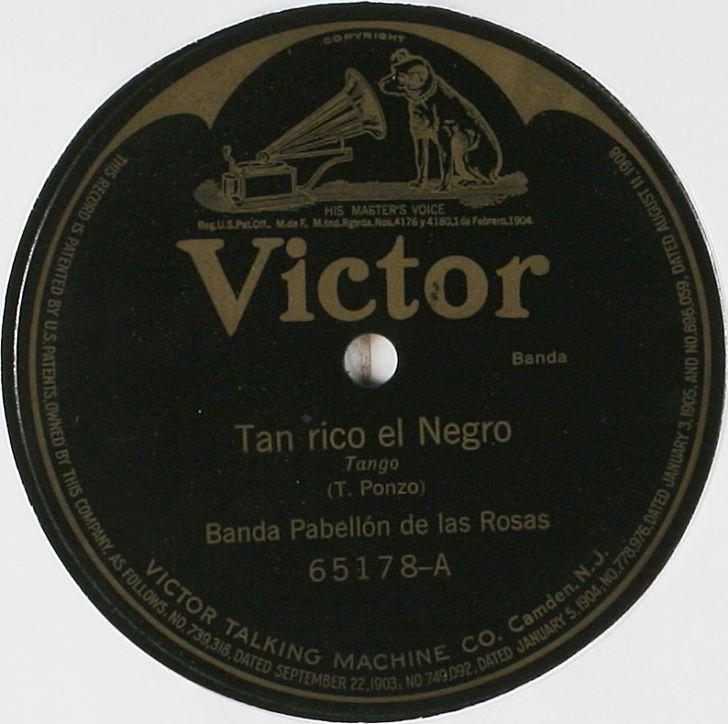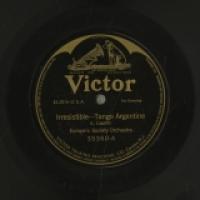Tan rico el negro
tangoThis tango was recorded by the house band of the Pabellón de las Rosas, a luxurious cabaret in the Recoleta neighborhood of Buenos Aires. In 1912, the instrumental lineup of the "orquesta típica," or tango band, had not yet been standardized. The horn section featured in this recording would soon disappear from the tango, replaced by bandoneones and violins. Here, the prominent habanera rhythm is being played by what sounds like a tuba.
The title of this tango, which translates roughly as "The Black Guy is So Rich," is a reminder of the genre's historical connection to the Afro-Argentine and Afro-Uruguayan populations. Both the tango and its precursor, the milonga, originated within those communities. In the nineteenth century, in fact, the verb "tango" meant to dance like black people. Although the leader of the Banda del Pabellón de las Rosas, César Sesso, was from an Italian family and we have no evidence of any Afro-Argentines on this particular recording, musicians of African descent were prominent in the tango world. In any case, the title of this song demonstrates that Argentines in 1912 continued to associate the tango with black people.
The title of this tango, which translates roughly as "The Black Guy is So Rich," is a reminder of the genre's historical connection to the Afro-Argentine and Afro-Uruguayan populations. Both the tango and its precursor, the milonga, originated within those communities. In the nineteenth century, in fact, the verb "tango" meant to dance like black people. Although the leader of the Banda del Pabellón de las Rosas, César Sesso, was from an Italian family and we have no evidence of any Afro-Argentines on this particular recording, musicians of African descent were prominent in the tango world. In any case, the title of this song demonstrates that Argentines in 1912 continued to associate the tango with black people.

